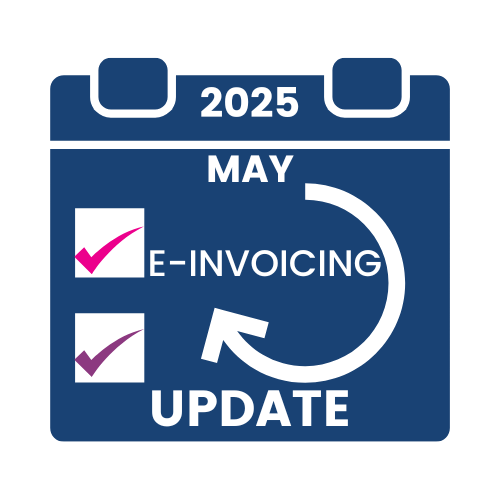All too often, blogs about AP automation concentrate on the software solutions and the processes and there is little discussion about the human element when implementing and using finance process automation.
This blog seeks to address the human touch in the world of automation. Automation is often linked to scare mongering talk about robots replacing people, taking all the jobs, particularly in administration and finance roles and that there is a bleak future ahead. But as more and more repetitive time-consuming tasks are automated, team members are given time to re-evaluate processes and identify pain points and blockers within those processes, and work on ways to solve them, often with further automation, thereby increasing their knowledge and skill base and their understanding of the human role in the AP team.
Measuring and Monitoring
Reports for monitoring and measuring using KPIs is a monthly task for AP teams, showing figures for debtor days, number of disputed invoices, days to close month-end, etc. All these metrics are useful for keeping on track, but do they include the human element? Why is the time to process an invoice increasing? How come there is a drop in invoices relating to POs?
If you consider using some more human centric KPIs you may find the answers to the change in figures. Here are a few ideas that are more Human Centric.
Team happiness
A happy team who enjoy their work – Measuring happiness by just asking the team on a monthly basis to rate their happiness on a scale of 1-10. It is well documented that happy people are generally more productive and influences both inside and outside work will have an effect on your team.
Touchless processing of invoices from receipt to payment.
Is this even a possibility within your organisation? With loud solutions giving extra accessibility, invoices could be captured, coded, approved and posted for payment without your team’s involvement. Of course, this could mean a major digital transformation, but is that something you have explored?
What % of suppliers that are paid to terms or earlier
A supplier that is paid early or pre term will be a happy supplier! Happy suppliers mean fewer calls to the AP team, fewer queries on invoices and a better, more stable supply of product, and that’s before early settlement discounts. And on the human level, fewer angry suppliers calling asked when they will be paid means a happier AP team.
A team who get the job done within their normal working hours -no overtime!
A work-life that doesn’t impinge on home life – a work/life balance is essential for the happiness of your team.
Adding these metrics to your monthly KPIs will help you measure more than just productivity and cost within your team.
Recognition and Reward
Recognising and rewarding achievements within the team helps with morale both individually and as a whole. Knowing your team and understanding their needs both personally and within the work environment will mean the recognition and rewards you offer for achievements will be meaningful to each individual.
Examples can include the following:
- Recognition from the wider business
- Extra training from industry experts like APA
- Attendance at industry events such as Roundtables and Summits
- Networking events and involvement in huddles with other likeminded organizations
- Enrollment on to accredited courses to increase personal qualifications
- Time off for personal enrichment – like learning a language
- Or even simple things like ‘Bake days’ where you celebrate together as a team and eat cake!
Of course, automation can be seen as a reward too. Processes that your team have identified as manual, repetitive and perhaps could be on their wish list for automation. But it’s important to make sure it’s understood that their recommendations and ideas for streamlining won’t mean they robots take their jobs! Ensuring any digital transformation your organisation decides on is a Human Centric one is key. Kate O’Neill has written a great book called the Tech Humanist and she states
The difference between digital transformation and human centric digital transformation is the effort it takes to step out from behind the corporate abstraction to make sure humans (employees, customers and stakeholders) have a say and have a future.
Wider business involvement
Getting the wider business involved and recognising the efforts they make to adhere to purchasing policies, receipt goods quickly and approve invoices in a timely manner, all make the AP teams life easier. Implementing a No PO No Pay policy is always a good option but it requires effort and education. Consider running workshop sessions and get stakeholders involved and show them your processes and how being compliant means your work is made so much easier, which in turn often means good arrive faster.
Use this as an opportunity to promote the AP team. Talk about your core values, your team ideas and what’s important to you. Show the human value of what you do by talking about any policies that may resonate with your audience. This could be sustainability for instance, with policies on prioritizing local suppliers or perhaps suppliers that have good ‘green‘ credentials. Run competitions on the fastest receipted goods, or the quickest approval and post a league table with fun rewards!
Spending time to understand the pain points of the wider business, and the restrictions and they experience is an important part of this involvement. Integrating with other IT solutions around the business is often a blocker to automation for the AP team.
Take the time to understand what is in daily use, and what, who and how these systems are used. Doing this will enable the plan for digital transformation to continue to evolve.
Kate O’Neill, author of Tech Humanist, suggests that when planning a digital transformation it’s important to include thinking about integration. Every platform increasingly depends on others and team leaders need to consider multiple inputs from channels, sources and silos in order to make effective decisions.
The other part of the wider business is your suppliers. Try running workshops in partnership with your solute provider and invite your key suppliers to join and understand how your AP team works and what’s important when submitting invoices. This is a great way to build supplier relationships and encourages better communications going forward. Suppliers are generally rewarded for their compliance and understanding with early payments – which often has a reward back to the business in early settlement discounts and a better supply chain.
Lastly, make your team the best place to work in the organisation. Having a strong stable team is a recipe for success. Turnover of staff is incredibly disruptive and time consuming for all involved. Making your team a happy one will encourage longevity and loyalty that continues the payback into the team.
Keep it human-centric, work with a growth mindset where team members feel confident making suggestions and there is no culture of blame, just opportunities to learn from mistakes are tips that mean that everyone is invested in the whole team, and therefore organisation’s success.
If you have found this blog of interest interesting and would like further information about any of our human-centric solutions, please do get in touch with one of the listening team at [email protected]





